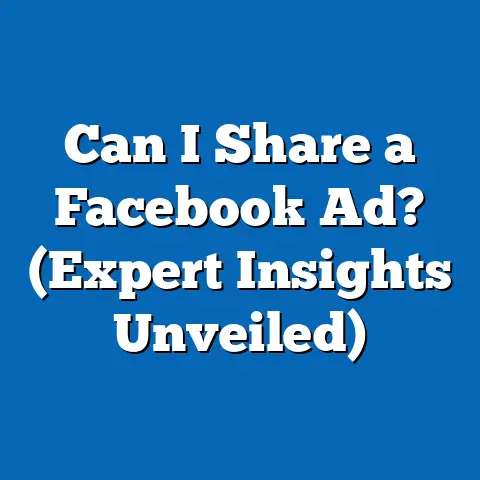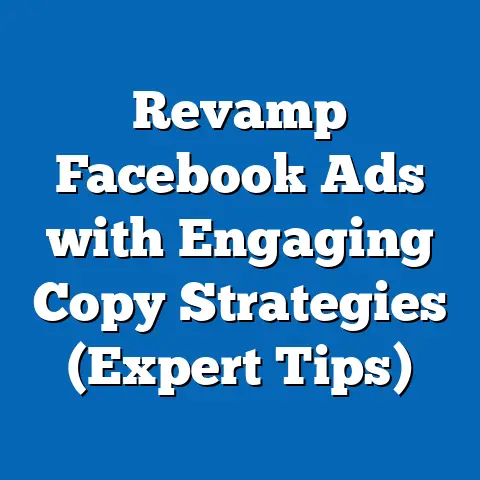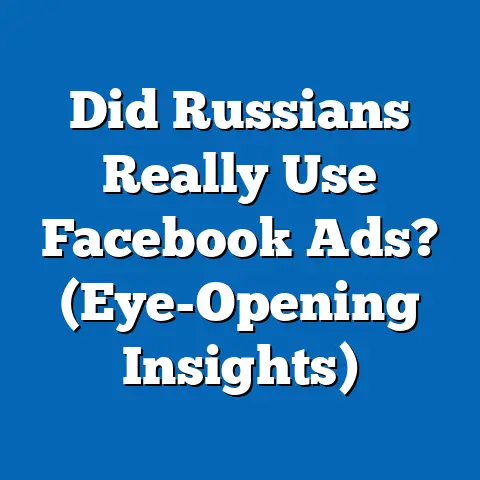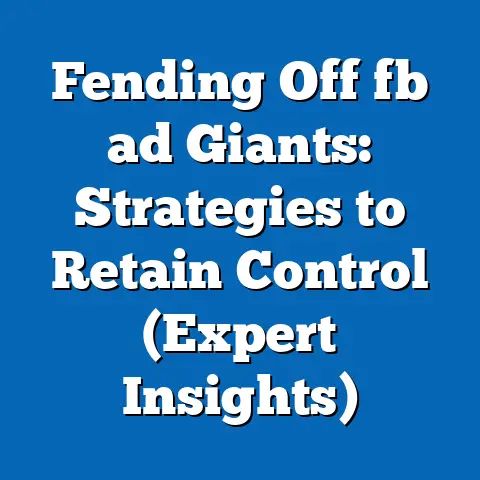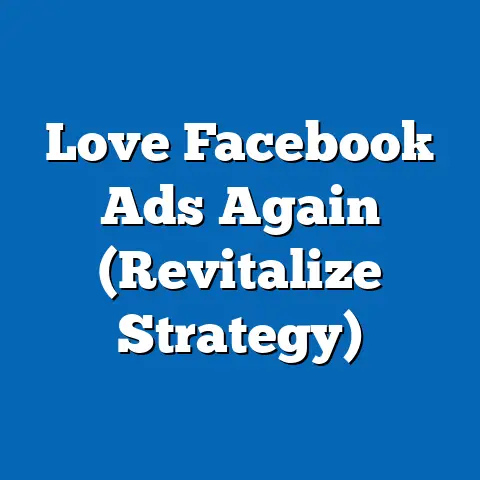Maximize Downloads with Facebook Ad Insights (Pro Tips)
Have you ever watched a movie where the underdog team, seemingly destined for failure, pulls off an incredible victory? Think of the Avengers, a ragtag group of superheroes, facing impossible odds against Thanos. What made them succeed? It wasn’t just brute force; it was understanding their individual strengths and weaknesses, strategizing, and adapting their approach. This same principle applies to Facebook advertising. Just like the Avengers needed a plan to save the universe, we, as marketers, need to leverage Facebook Ad insights to maximize app downloads. Without a solid understanding of our data, we’re essentially flying blind, hoping for the best. In this guide, I’ll show you how to use Facebook Ad insights to become the superhero of your app download campaigns.
Understanding Facebook Ad Insights
So, what exactly are Facebook Ad Insights? Think of them as your personal Jarvis, the AI assistant that gives Tony Stark all the crucial information he needs. Facebook Ad Insights is a powerful analytics tool that provides a wealth of data about your ad campaigns. It’s a treasure trove of information about your audience, ad performance, and overall effectiveness.
This isn’t just about vanity metrics like likes and shares. We’re talking about deep dives into impressions (how many times your ad was shown), clicks (how many people interacted with your ad), conversions (how many people downloaded your app), demographics (who is seeing and engaging with your ads), and even placement data (where your ads are performing best – Facebook, Instagram, Audience Network?).
Why is this data so important? Because it allows us to make informed decisions. Imagine Iron Man trying to fight Thanos without knowing his weaknesses. He’d be toast! Similarly, if you’re running an ad campaign without analyzing the insights, you’re essentially guessing. You need to know who is responding to your ads, what messaging resonates with them, and which platforms are delivering the best results.
For example, I once ran a campaign for a fitness app targeting a broad audience of “health enthusiasts.” The initial results were underwhelming. However, after digging into the Ad Insights, I discovered that my ads were performing significantly better with women aged 25-34 who were interested in yoga and healthy recipes. Armed with this knowledge, I narrowed my targeting and revamped my ad creatives to speak directly to this specific demographic. The result? A 300% increase in app downloads within a week! That’s the power of data-driven decision-making.
Key Takeaway: Facebook Ad Insights are your superpower. They provide the data you need to understand your audience, optimize your campaigns, and drive more app downloads. Don’t ignore them!
In the world of filmmaking, casting is everything. Can you imagine anyone other than Robert Downey Jr. playing Iron Man? Or anyone but Gal Gadot as Wonder Woman? The right actors bring the characters to life and make the story believable. Similarly, in advertising, identifying and understanding your target audience is crucial for success.Facebook’s audience targeting features are like a casting director’s dream come true. You can target users based on a wide range of criteria, including demographics (age, gender, location), interests (hobbies, passions, activities), behaviors (purchase history, online activity), and even custom audiences (people who have already interacted with your app or website).
Why is this so important? Because relevance is king (or queen!). People are bombarded with ads every day. If your ad isn’t relevant to their interests and needs, they’ll simply ignore it. Think about it: would you be more likely to download a fitness app if you’re already interested in health and wellness, or if you’re a couch potato who prefers Netflix and pizza?
I remember working on a campaign for a language learning app. Initially, we targeted anyone interested in travel. The results were mediocre. However, after analyzing the data, we discovered that our ads were performing much better with people who had recently booked international flights or were actively researching travel destinations. We refined our targeting to focus on these “travel planners,” and the app downloads skyrocketed.
Another example? I worked with a client who had a mobile game. They assumed their target audience was young males, 18-25 years old. After diving into the Facebook Insights, we discovered that the game was actually more popular with women aged 25-40 who enjoyed puzzle games and strategy games. We adjusted our targeting, and the results were amazing.
Key Takeaway: Don’t make assumptions about your target audience. Use Facebook’s audience targeting features to identify the right users and ensure your ads are relevant to their interests. Treat your audience targeting like casting the perfect actors for your ad campaign.
Crafting Compelling Ad Creatives
Now, let’s talk about ad creatives. Think of a memorable movie poster. What makes it stand out? It could be the striking visuals, the intriguing tagline, or the promise of an epic adventure. Similarly, your ad creatives need to grab attention, convey your message, and entice users to download your app.
The key elements of a compelling ad creative include:
- Visuals: High-quality images or videos that showcase your app’s features and benefits.
- Copy: Clear, concise, and persuasive text that highlights the value proposition of your app.
- Call-to-Action: A clear and compelling call to action that encourages users to download the app (e.g., “Download Now,” “Get Started,” “Try it Free”).
Think of a catchy song. It has a memorable melody, relatable lyrics, and a driving beat that makes you want to dance. Similarly, your ad creatives need to be engaging, informative, and persuasive.
I’ve seen countless examples of poorly designed ads that fail to capture attention. Blurry images, confusing messaging, and weak calls to action are a recipe for disaster. On the other hand, I’ve also seen ads that are so compelling they practically force you to click.
One example that stands out is an ad I saw for a meditation app. It featured a beautiful image of a serene landscape, a calming voiceover, and a tagline that promised to reduce stress and improve sleep. The call to action was simple: “Find Your Inner Peace.” The ad was so effective that I downloaded the app myself!
Another great example is an ad for a mobile game that featured gameplay footage, upbeat music, and a tagline that promised hours of fun. The call to action was “Download Now and Start Playing!” The ad was so engaging that I couldn’t resist giving the game a try.
Key Takeaway: Your ad creatives are your first impression. Make them count! Use high-quality visuals, compelling copy, and a clear call to action to grab attention and drive downloads. Think of your ad creative like a movie trailer – it needs to be exciting and informative enough to make people want to see the whole show.
A/B Testing and Optimization
A/B testing is like the “Star Wars” franchise. Think about it: each movie in the series has experimented with different characters, storylines, and visual effects. Some experiments have been wildly successful (like “The Empire Strikes Back”), while others have been less so (we won’t mention any specific titles). The point is, the franchise has evolved over time through continuous testing and adaptation.
Similarly, A/B testing allows you to experiment with different elements of your ads to see what performs best. You can test different headlines, images, audiences, placements, and calls to action. The goal is to identify the winning combinations that drive the most app downloads.
Why is A/B testing so important? Because it eliminates guesswork. Instead of relying on your gut feeling, you can use data to make informed decisions.
For example, let’s say you’re running an ad campaign for a food delivery app. You could A/B test two different headlines:
- Headline A: “Get Your Favorite Food Delivered Fast”
- Headline B: “Craving Something Delicious? Order Now!”
By running both headlines side-by-side, you can see which one generates more clicks and downloads.
I remember working on a campaign for a travel app where we A/B tested different images. We used one image of a tropical beach, and another image of a bustling city. Surprisingly, the city image outperformed the beach image by a wide margin. This taught us that our target audience was more interested in urban adventures than relaxing getaways.
Another time, I was working on a campaign for an e-commerce app where we A/B tested different calls to action. We used one call to action that said “Shop Now,” and another call to action that said “Get 20% Off Your First Order.” The “Get 20% Off” call to action generated significantly more downloads.
Key Takeaway: A/B testing is essential for optimizing your ads and maximizing your ROI. Don’t be afraid to experiment with different elements and see what works best. Think of A/B testing like a science experiment – you’re testing different hypotheses to find the winning formula.
Analyzing and Iterating Based on Insights
Finally, let’s talk about analyzing and iterating. Think of a long-running TV series like “The Simpsons.” It’s been on the air for over 30 years, and it’s constantly evolving to stay relevant and engaging. The writers and producers pay close attention to viewer feedback, ratings, and trends. They iterate on their storylines, characters, and humor to keep the show fresh and entertaining.
Similarly, you need to continuously analyze the data from your ad campaigns and make informed decisions for future ads. This means tracking your key metrics, identifying trends, and making adjustments to your strategy.
What should you be looking for?
- Click-Through Rate (CTR): The percentage of people who click on your ad after seeing it.
- Conversion Rate: The percentage of people who download your app after clicking on your ad.
- Cost Per Acquisition (CPA): The cost of acquiring a new app download.
- Return on Ad Spend (ROAS): The amount of revenue you generate for every dollar you spend on advertising.
By tracking these metrics, you can identify areas for improvement and optimize your campaigns for better performance.
I always tell my clients to treat their ad campaigns like a living, breathing organism. They need to be constantly monitored, nurtured, and adapted to changing conditions.
For example, I was working on a campaign for a productivity app. We were seeing a decent click-through rate, but the conversion rate was low. After analyzing the data, we discovered that people were clicking on the ad, but they weren’t downloading the app because they were confused about its features. We revamped our landing page to provide a clearer explanation of the app’s benefits, and the conversion rate skyrocketed.
Another time, I was working on a campaign for a dating app. We were seeing a high cost per acquisition, which meant we were spending too much money to acquire new users. After analyzing the data, we discovered that our ads were performing poorly on certain platforms. We cut our budget for those platforms and reallocated it to the platforms that were generating the best results.
Key Takeaway: Analyzing and iterating is an ongoing process. Continuously track your metrics, identify trends, and make adjustments to your strategy to maximize your ROI. Think of your ad campaigns like a TV series – you need to constantly evolve to keep your audience engaged.
Remember, Facebook Ad Insights are your superpower. They provide the data you need to understand your audience, optimize your campaigns, and drive more app downloads. Don’t ignore them!
Now, go forth and conquer the world of Facebook advertising. Just like the characters in our favorite stories, you have the power to overcome obstacles and achieve your dreams. So, take action, utilize Facebook Ad insights, and maximize your app downloads. The universe (or at least your app store ranking) is counting on you!

